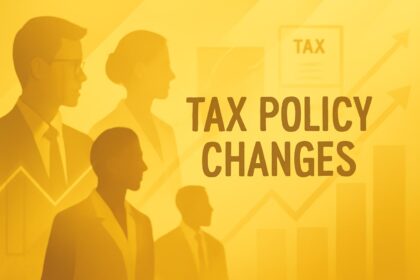The latest tariff escalation between the U.S. and Canada introduces fresh uncertainty into North American trade relations. While the immediate economic impact may be contained by existing trade frameworks, the move risks prolonging and deepening trade disputes at a critical juncture. !-- wp:paragraph -->
Contents
FinOracleAI — Market ViewFinOracleAI — Market ViewBroader Political Context and ReactionsFinOracleAI — Market ViewBroader Political Context and ReactionsFinOracleAI — Market ViewImpact on US-Canada Trade TalksBroader Political Context and ReactionsFinOracleAI — Market ViewImpact on US-Canada Trade TalksBroader Political Context and ReactionsFinOracleAI — Market ViewPolitical Reactions and Timing of the AdImpact on US-Canada Trade TalksBroader Political Context and ReactionsFinOracleAI — Market ViewPolitical Reactions and Timing of the AdImpact on US-Canada Trade TalksBroader Political Context and ReactionsFinOracleAI — Market ViewPolitical Reactions and Timing of the AdImpact on US-Canada Trade TalksBroader Political Context and ReactionsFinOracleAI — Market ViewControversy Over Ontario’s Reagan Tariff AdPolitical Reactions and Timing of the AdImpact on US-Canada Trade TalksBroader Political Context and ReactionsFinOracleAI — Market ViewControversy Over Ontario’s Reagan Tariff AdPolitical Reactions and Timing of the AdImpact on US-Canada Trade TalksBroader Political Context and ReactionsFinOracleAI — Market ViewTrade Tensions Escalate as Trump Imposes New Tariff on CanadaControversy Over Ontario’s Reagan Tariff AdPolitical Reactions and Timing of the AdImpact on US-Canada Trade TalksBroader Political Context and ReactionsFinOracleAI — Market View
- Opportunities: Potential leverage in trade negotiations; increased political pressure on Canadian trade policies.
- Risks: Escalation of retaliatory tariffs; disruption to supply chains; negative impact on cross-border trade and investment.
- Heightened market volatility surrounding U.S.-Canada economic relations.
- Legal uncertainties pending Supreme Court ruling on presidential tariff powers.
FinOracleAI — Market View
The latest tariff escalation between the U.S. and Canada introduces fresh uncertainty into North American trade relations. While the immediate economic impact may be contained by existing trade frameworks, the move risks prolonging and deepening trade disputes at a critical juncture. !-- wp:paragraph -->- Opportunities: Potential leverage in trade negotiations; increased political pressure on Canadian trade policies.
- Risks: Escalation of retaliatory tariffs; disruption to supply chains; negative impact on cross-border trade and investment.
- Heightened market volatility surrounding U.S.-Canada economic relations.
- Legal uncertainties pending Supreme Court ruling on presidential tariff powers.
FinOracleAI — Market View
The latest tariff escalation between the U.S. and Canada introduces fresh uncertainty into North American trade relations. While the immediate economic impact may be contained by existing trade frameworks, the move risks prolonging and deepening trade disputes at a critical juncture. !-- wp:paragraph -->- Opportunities: Potential leverage in trade negotiations; increased political pressure on Canadian trade policies.
- Risks: Escalation of retaliatory tariffs; disruption to supply chains; negative impact on cross-border trade and investment.
- Heightened market volatility surrounding U.S.-Canada economic relations.
- Legal uncertainties pending Supreme Court ruling on presidential tariff powers.
Broader Political Context and Reactions
Trump accused Canada of attempting to influence a pending U.S. Supreme Court ruling on tariff authority, further framing the ad controversy as an attempt to undermine U.S. national interests. He alleged that Canada has historically exploited tariff policies detrimental to American farmers, sometimes charging up to 400% tariffs. !-- wp:paragraph --> Ford, identifying as a “big Ronald Reagan fan,” emphasized that the goal was to engage American audiences on the economic consequences of tariffs. He pledged to continue promoting the message across Republican districts nationwide. !-- wp:paragraph -->FinOracleAI — Market View
The latest tariff escalation between the U.S. and Canada introduces fresh uncertainty into North American trade relations. While the immediate economic impact may be contained by existing trade frameworks, the move risks prolonging and deepening trade disputes at a critical juncture. !-- wp:paragraph -->- Opportunities: Potential leverage in trade negotiations; increased political pressure on Canadian trade policies.
- Risks: Escalation of retaliatory tariffs; disruption to supply chains; negative impact on cross-border trade and investment.
- Heightened market volatility surrounding U.S.-Canada economic relations.
- Legal uncertainties pending Supreme Court ruling on presidential tariff powers.
Broader Political Context and Reactions
Trump accused Canada of attempting to influence a pending U.S. Supreme Court ruling on tariff authority, further framing the ad controversy as an attempt to undermine U.S. national interests. He alleged that Canada has historically exploited tariff policies detrimental to American farmers, sometimes charging up to 400% tariffs. !-- wp:paragraph --> Ford, identifying as a “big Ronald Reagan fan,” emphasized that the goal was to engage American audiences on the economic consequences of tariffs. He pledged to continue promoting the message across Republican districts nationwide. !-- wp:paragraph -->FinOracleAI — Market View
The latest tariff escalation between the U.S. and Canada introduces fresh uncertainty into North American trade relations. While the immediate economic impact may be contained by existing trade frameworks, the move risks prolonging and deepening trade disputes at a critical juncture. !-- wp:paragraph -->- Opportunities: Potential leverage in trade negotiations; increased political pressure on Canadian trade policies.
- Risks: Escalation of retaliatory tariffs; disruption to supply chains; negative impact on cross-border trade and investment.
- Heightened market volatility surrounding U.S.-Canada economic relations.
- Legal uncertainties pending Supreme Court ruling on presidential tariff powers.
Impact on US-Canada Trade Talks
The tariff increase and ad dispute have stalled ongoing trade negotiations between the U.S. and Canada. Trump cited the Ontario ad as a reason for halting talks on Thursday night. The heightened tensions come amid a critical Supreme Court case scheduled for early November that will determine the legality of Trump’s unilateral tariff impositions without Congressional approval. !-- wp:paragraph --> Canadian tariffs on goods entering the U.S. generally stand at 35%, with exceptions under the U.S.-Mexico-Canada Agreement (USMCA) and specific tariffs on steel and aluminum reaching 50%. The additional 10% tariff imposed by Trump would apply on top of these existing rates. !-- wp:paragraph -->Broader Political Context and Reactions
Trump accused Canada of attempting to influence a pending U.S. Supreme Court ruling on tariff authority, further framing the ad controversy as an attempt to undermine U.S. national interests. He alleged that Canada has historically exploited tariff policies detrimental to American farmers, sometimes charging up to 400% tariffs. !-- wp:paragraph --> Ford, identifying as a “big Ronald Reagan fan,” emphasized that the goal was to engage American audiences on the economic consequences of tariffs. He pledged to continue promoting the message across Republican districts nationwide. !-- wp:paragraph -->FinOracleAI — Market View
The latest tariff escalation between the U.S. and Canada introduces fresh uncertainty into North American trade relations. While the immediate economic impact may be contained by existing trade frameworks, the move risks prolonging and deepening trade disputes at a critical juncture. !-- wp:paragraph -->- Opportunities: Potential leverage in trade negotiations; increased political pressure on Canadian trade policies.
- Risks: Escalation of retaliatory tariffs; disruption to supply chains; negative impact on cross-border trade and investment.
- Heightened market volatility surrounding U.S.-Canada economic relations.
- Legal uncertainties pending Supreme Court ruling on presidential tariff powers.
Impact on US-Canada Trade Talks
The tariff increase and ad dispute have stalled ongoing trade negotiations between the U.S. and Canada. Trump cited the Ontario ad as a reason for halting talks on Thursday night. The heightened tensions come amid a critical Supreme Court case scheduled for early November that will determine the legality of Trump’s unilateral tariff impositions without Congressional approval. !-- wp:paragraph --> Canadian tariffs on goods entering the U.S. generally stand at 35%, with exceptions under the U.S.-Mexico-Canada Agreement (USMCA) and specific tariffs on steel and aluminum reaching 50%. The additional 10% tariff imposed by Trump would apply on top of these existing rates. !-- wp:paragraph -->Broader Political Context and Reactions
Trump accused Canada of attempting to influence a pending U.S. Supreme Court ruling on tariff authority, further framing the ad controversy as an attempt to undermine U.S. national interests. He alleged that Canada has historically exploited tariff policies detrimental to American farmers, sometimes charging up to 400% tariffs. !-- wp:paragraph --> Ford, identifying as a “big Ronald Reagan fan,” emphasized that the goal was to engage American audiences on the economic consequences of tariffs. He pledged to continue promoting the message across Republican districts nationwide. !-- wp:paragraph -->FinOracleAI — Market View
The latest tariff escalation between the U.S. and Canada introduces fresh uncertainty into North American trade relations. While the immediate economic impact may be contained by existing trade frameworks, the move risks prolonging and deepening trade disputes at a critical juncture. !-- wp:paragraph -->- Opportunities: Potential leverage in trade negotiations; increased political pressure on Canadian trade policies.
- Risks: Escalation of retaliatory tariffs; disruption to supply chains; negative impact on cross-border trade and investment.
- Heightened market volatility surrounding U.S.-Canada economic relations.
- Legal uncertainties pending Supreme Court ruling on presidential tariff powers.
Political Reactions and Timing of the Ad
The ad aired during the first two games of the World Series, including a broadcast watched by millions of Americans. The timing was viewed as provocative, especially since the Toronto Blue Jays, based in Ontario, played and won the opening game against the U.S. Los Angeles Dodgers. !-- wp:paragraph --> Trump publicly criticized Ontario for delaying the ad’s withdrawal until after the initial World Series games, calling the move “dirty play” and asserting that the U.S. could respond more forcefully. Ford announced the ad would be paused starting Monday to facilitate the resumption of trade negotiations but maintained that the campaign’s message would continue to reach American audiences over the weekend. !-- wp:paragraph -->Impact on US-Canada Trade Talks
The tariff increase and ad dispute have stalled ongoing trade negotiations between the U.S. and Canada. Trump cited the Ontario ad as a reason for halting talks on Thursday night. The heightened tensions come amid a critical Supreme Court case scheduled for early November that will determine the legality of Trump’s unilateral tariff impositions without Congressional approval. !-- wp:paragraph --> Canadian tariffs on goods entering the U.S. generally stand at 35%, with exceptions under the U.S.-Mexico-Canada Agreement (USMCA) and specific tariffs on steel and aluminum reaching 50%. The additional 10% tariff imposed by Trump would apply on top of these existing rates. !-- wp:paragraph -->Broader Political Context and Reactions
Trump accused Canada of attempting to influence a pending U.S. Supreme Court ruling on tariff authority, further framing the ad controversy as an attempt to undermine U.S. national interests. He alleged that Canada has historically exploited tariff policies detrimental to American farmers, sometimes charging up to 400% tariffs. !-- wp:paragraph --> Ford, identifying as a “big Ronald Reagan fan,” emphasized that the goal was to engage American audiences on the economic consequences of tariffs. He pledged to continue promoting the message across Republican districts nationwide. !-- wp:paragraph -->FinOracleAI — Market View
The latest tariff escalation between the U.S. and Canada introduces fresh uncertainty into North American trade relations. While the immediate economic impact may be contained by existing trade frameworks, the move risks prolonging and deepening trade disputes at a critical juncture. !-- wp:paragraph -->- Opportunities: Potential leverage in trade negotiations; increased political pressure on Canadian trade policies.
- Risks: Escalation of retaliatory tariffs; disruption to supply chains; negative impact on cross-border trade and investment.
- Heightened market volatility surrounding U.S.-Canada economic relations.
- Legal uncertainties pending Supreme Court ruling on presidential tariff powers.
“When someone says, ‘Let’s impose tariffs on foreign imports,’ it looks like they’re doing the patriotic thing by protecting American products and jobs. And sometimes, for a short while, it works — but only for a short time,” Reagan said in the speech and the ad. The foundation posted the full speech on YouTube, urging viewers to consider the complete context. Premier Ford responded by sharing the video link and defended the ad’s core message, asserting that it effectively initiated a conversation about tariffs’ impact on workers and businesses.
!-- wp:paragraph -->Political Reactions and Timing of the Ad
The ad aired during the first two games of the World Series, including a broadcast watched by millions of Americans. The timing was viewed as provocative, especially since the Toronto Blue Jays, based in Ontario, played and won the opening game against the U.S. Los Angeles Dodgers. !-- wp:paragraph --> Trump publicly criticized Ontario for delaying the ad’s withdrawal until after the initial World Series games, calling the move “dirty play” and asserting that the U.S. could respond more forcefully. Ford announced the ad would be paused starting Monday to facilitate the resumption of trade negotiations but maintained that the campaign’s message would continue to reach American audiences over the weekend. !-- wp:paragraph -->Impact on US-Canada Trade Talks
The tariff increase and ad dispute have stalled ongoing trade negotiations between the U.S. and Canada. Trump cited the Ontario ad as a reason for halting talks on Thursday night. The heightened tensions come amid a critical Supreme Court case scheduled for early November that will determine the legality of Trump’s unilateral tariff impositions without Congressional approval. !-- wp:paragraph --> Canadian tariffs on goods entering the U.S. generally stand at 35%, with exceptions under the U.S.-Mexico-Canada Agreement (USMCA) and specific tariffs on steel and aluminum reaching 50%. The additional 10% tariff imposed by Trump would apply on top of these existing rates. !-- wp:paragraph -->Broader Political Context and Reactions
Trump accused Canada of attempting to influence a pending U.S. Supreme Court ruling on tariff authority, further framing the ad controversy as an attempt to undermine U.S. national interests. He alleged that Canada has historically exploited tariff policies detrimental to American farmers, sometimes charging up to 400% tariffs. !-- wp:paragraph --> Ford, identifying as a “big Ronald Reagan fan,” emphasized that the goal was to engage American audiences on the economic consequences of tariffs. He pledged to continue promoting the message across Republican districts nationwide. !-- wp:paragraph -->FinOracleAI — Market View
The latest tariff escalation between the U.S. and Canada introduces fresh uncertainty into North American trade relations. While the immediate economic impact may be contained by existing trade frameworks, the move risks prolonging and deepening trade disputes at a critical juncture. !-- wp:paragraph -->- Opportunities: Potential leverage in trade negotiations; increased political pressure on Canadian trade policies.
- Risks: Escalation of retaliatory tariffs; disruption to supply chains; negative impact on cross-border trade and investment.
- Heightened market volatility surrounding U.S.-Canada economic relations.
- Legal uncertainties pending Supreme Court ruling on presidential tariff powers.
“When someone says, ‘Let’s impose tariffs on foreign imports,’ it looks like they’re doing the patriotic thing by protecting American products and jobs. And sometimes, for a short while, it works — but only for a short time,” Reagan said in the speech and the ad. The foundation posted the full speech on YouTube, urging viewers to consider the complete context. Premier Ford responded by sharing the video link and defended the ad’s core message, asserting that it effectively initiated a conversation about tariffs’ impact on workers and businesses.
!-- wp:paragraph -->Political Reactions and Timing of the Ad
The ad aired during the first two games of the World Series, including a broadcast watched by millions of Americans. The timing was viewed as provocative, especially since the Toronto Blue Jays, based in Ontario, played and won the opening game against the U.S. Los Angeles Dodgers. !-- wp:paragraph --> Trump publicly criticized Ontario for delaying the ad’s withdrawal until after the initial World Series games, calling the move “dirty play” and asserting that the U.S. could respond more forcefully. Ford announced the ad would be paused starting Monday to facilitate the resumption of trade negotiations but maintained that the campaign’s message would continue to reach American audiences over the weekend. !-- wp:paragraph -->Impact on US-Canada Trade Talks
The tariff increase and ad dispute have stalled ongoing trade negotiations between the U.S. and Canada. Trump cited the Ontario ad as a reason for halting talks on Thursday night. The heightened tensions come amid a critical Supreme Court case scheduled for early November that will determine the legality of Trump’s unilateral tariff impositions without Congressional approval. !-- wp:paragraph --> Canadian tariffs on goods entering the U.S. generally stand at 35%, with exceptions under the U.S.-Mexico-Canada Agreement (USMCA) and specific tariffs on steel and aluminum reaching 50%. The additional 10% tariff imposed by Trump would apply on top of these existing rates. !-- wp:paragraph -->Broader Political Context and Reactions
Trump accused Canada of attempting to influence a pending U.S. Supreme Court ruling on tariff authority, further framing the ad controversy as an attempt to undermine U.S. national interests. He alleged that Canada has historically exploited tariff policies detrimental to American farmers, sometimes charging up to 400% tariffs. !-- wp:paragraph --> Ford, identifying as a “big Ronald Reagan fan,” emphasized that the goal was to engage American audiences on the economic consequences of tariffs. He pledged to continue promoting the message across Republican districts nationwide. !-- wp:paragraph -->FinOracleAI — Market View
The latest tariff escalation between the U.S. and Canada introduces fresh uncertainty into North American trade relations. While the immediate economic impact may be contained by existing trade frameworks, the move risks prolonging and deepening trade disputes at a critical juncture. !-- wp:paragraph -->- Opportunities: Potential leverage in trade negotiations; increased political pressure on Canadian trade policies.
- Risks: Escalation of retaliatory tariffs; disruption to supply chains; negative impact on cross-border trade and investment.
- Heightened market volatility surrounding U.S.-Canada economic relations.
- Legal uncertainties pending Supreme Court ruling on presidential tariff powers.
Controversy Over Ontario’s Reagan Tariff Ad
The Ontario government, led by Premier Doug Ford, launched the ad campaign in the U.S. earlier this month with a $75 million budget. The ad cites Reagan’s warnings about the dangers of tariffs, highlighting his statement that “high tariffs inevitably lead to retaliation by foreign countries and the triggering of fierce trade wars.” !-- wp:paragraph --> However, the Ronald Reagan Presidential Foundation and Institute criticized the ad for selectively editing Reagan’s 1987 radio address. They emphasized that Reagan’s original speech addressed tariffs imposed on Japanese semiconductor products, providing a context omitted from the Ontario advertisement. !-- wp:paragraph -->“When someone says, ‘Let’s impose tariffs on foreign imports,’ it looks like they’re doing the patriotic thing by protecting American products and jobs. And sometimes, for a short while, it works — but only for a short time,” Reagan said in the speech and the ad. The foundation posted the full speech on YouTube, urging viewers to consider the complete context. Premier Ford responded by sharing the video link and defended the ad’s core message, asserting that it effectively initiated a conversation about tariffs’ impact on workers and businesses.
!-- wp:paragraph -->Political Reactions and Timing of the Ad
The ad aired during the first two games of the World Series, including a broadcast watched by millions of Americans. The timing was viewed as provocative, especially since the Toronto Blue Jays, based in Ontario, played and won the opening game against the U.S. Los Angeles Dodgers. !-- wp:paragraph --> Trump publicly criticized Ontario for delaying the ad’s withdrawal until after the initial World Series games, calling the move “dirty play” and asserting that the U.S. could respond more forcefully. Ford announced the ad would be paused starting Monday to facilitate the resumption of trade negotiations but maintained that the campaign’s message would continue to reach American audiences over the weekend. !-- wp:paragraph -->Impact on US-Canada Trade Talks
The tariff increase and ad dispute have stalled ongoing trade negotiations between the U.S. and Canada. Trump cited the Ontario ad as a reason for halting talks on Thursday night. The heightened tensions come amid a critical Supreme Court case scheduled for early November that will determine the legality of Trump’s unilateral tariff impositions without Congressional approval. !-- wp:paragraph --> Canadian tariffs on goods entering the U.S. generally stand at 35%, with exceptions under the U.S.-Mexico-Canada Agreement (USMCA) and specific tariffs on steel and aluminum reaching 50%. The additional 10% tariff imposed by Trump would apply on top of these existing rates. !-- wp:paragraph -->Broader Political Context and Reactions
Trump accused Canada of attempting to influence a pending U.S. Supreme Court ruling on tariff authority, further framing the ad controversy as an attempt to undermine U.S. national interests. He alleged that Canada has historically exploited tariff policies detrimental to American farmers, sometimes charging up to 400% tariffs. !-- wp:paragraph --> Ford, identifying as a “big Ronald Reagan fan,” emphasized that the goal was to engage American audiences on the economic consequences of tariffs. He pledged to continue promoting the message across Republican districts nationwide. !-- wp:paragraph -->FinOracleAI — Market View
The latest tariff escalation between the U.S. and Canada introduces fresh uncertainty into North American trade relations. While the immediate economic impact may be contained by existing trade frameworks, the move risks prolonging and deepening trade disputes at a critical juncture. !-- wp:paragraph -->- Opportunities: Potential leverage in trade negotiations; increased political pressure on Canadian trade policies.
- Risks: Escalation of retaliatory tariffs; disruption to supply chains; negative impact on cross-border trade and investment.
- Heightened market volatility surrounding U.S.-Canada economic relations.
- Legal uncertainties pending Supreme Court ruling on presidential tariff powers.
Controversy Over Ontario’s Reagan Tariff Ad
The Ontario government, led by Premier Doug Ford, launched the ad campaign in the U.S. earlier this month with a $75 million budget. The ad cites Reagan’s warnings about the dangers of tariffs, highlighting his statement that “high tariffs inevitably lead to retaliation by foreign countries and the triggering of fierce trade wars.” !-- wp:paragraph --> However, the Ronald Reagan Presidential Foundation and Institute criticized the ad for selectively editing Reagan’s 1987 radio address. They emphasized that Reagan’s original speech addressed tariffs imposed on Japanese semiconductor products, providing a context omitted from the Ontario advertisement. !-- wp:paragraph -->“When someone says, ‘Let’s impose tariffs on foreign imports,’ it looks like they’re doing the patriotic thing by protecting American products and jobs. And sometimes, for a short while, it works — but only for a short time,” Reagan said in the speech and the ad. The foundation posted the full speech on YouTube, urging viewers to consider the complete context. Premier Ford responded by sharing the video link and defended the ad’s core message, asserting that it effectively initiated a conversation about tariffs’ impact on workers and businesses.
!-- wp:paragraph -->Political Reactions and Timing of the Ad
The ad aired during the first two games of the World Series, including a broadcast watched by millions of Americans. The timing was viewed as provocative, especially since the Toronto Blue Jays, based in Ontario, played and won the opening game against the U.S. Los Angeles Dodgers. !-- wp:paragraph --> Trump publicly criticized Ontario for delaying the ad’s withdrawal until after the initial World Series games, calling the move “dirty play” and asserting that the U.S. could respond more forcefully. Ford announced the ad would be paused starting Monday to facilitate the resumption of trade negotiations but maintained that the campaign’s message would continue to reach American audiences over the weekend. !-- wp:paragraph -->Impact on US-Canada Trade Talks
The tariff increase and ad dispute have stalled ongoing trade negotiations between the U.S. and Canada. Trump cited the Ontario ad as a reason for halting talks on Thursday night. The heightened tensions come amid a critical Supreme Court case scheduled for early November that will determine the legality of Trump’s unilateral tariff impositions without Congressional approval. !-- wp:paragraph --> Canadian tariffs on goods entering the U.S. generally stand at 35%, with exceptions under the U.S.-Mexico-Canada Agreement (USMCA) and specific tariffs on steel and aluminum reaching 50%. The additional 10% tariff imposed by Trump would apply on top of these existing rates. !-- wp:paragraph -->Broader Political Context and Reactions
Trump accused Canada of attempting to influence a pending U.S. Supreme Court ruling on tariff authority, further framing the ad controversy as an attempt to undermine U.S. national interests. He alleged that Canada has historically exploited tariff policies detrimental to American farmers, sometimes charging up to 400% tariffs. !-- wp:paragraph --> Ford, identifying as a “big Ronald Reagan fan,” emphasized that the goal was to engage American audiences on the economic consequences of tariffs. He pledged to continue promoting the message across Republican districts nationwide. !-- wp:paragraph -->FinOracleAI — Market View
The latest tariff escalation between the U.S. and Canada introduces fresh uncertainty into North American trade relations. While the immediate economic impact may be contained by existing trade frameworks, the move risks prolonging and deepening trade disputes at a critical juncture. !-- wp:paragraph -->- Opportunities: Potential leverage in trade negotiations; increased political pressure on Canadian trade policies.
- Risks: Escalation of retaliatory tariffs; disruption to supply chains; negative impact on cross-border trade and investment.
- Heightened market volatility surrounding U.S.-Canada economic relations.
- Legal uncertainties pending Supreme Court ruling on presidential tariff powers.
Trade Tensions Escalate as Trump Imposes New Tariff on Canada
President Donald Trump announced on Saturday a 10% increase in tariffs on Canadian imports, citing a misleading television advertisement aired by Ontario’s provincial government. The ad featured excerpts from former President Ronald Reagan’s 1987 speech on tariffs, which Trump and his administration claim was taken out of context to criticize U.S. tariff policies. !-- wp:paragraph --> Trump posted on Truth Social that Canada was “caught, red handed,” running a “fraudulent advertisement” that distorted Reagan’s original remarks. He declared the tariff hike as a direct retaliation for what he described as a “hostile act” against the United States. !-- wp:paragraph -->Controversy Over Ontario’s Reagan Tariff Ad
The Ontario government, led by Premier Doug Ford, launched the ad campaign in the U.S. earlier this month with a $75 million budget. The ad cites Reagan’s warnings about the dangers of tariffs, highlighting his statement that “high tariffs inevitably lead to retaliation by foreign countries and the triggering of fierce trade wars.” !-- wp:paragraph --> However, the Ronald Reagan Presidential Foundation and Institute criticized the ad for selectively editing Reagan’s 1987 radio address. They emphasized that Reagan’s original speech addressed tariffs imposed on Japanese semiconductor products, providing a context omitted from the Ontario advertisement. !-- wp:paragraph -->“When someone says, ‘Let’s impose tariffs on foreign imports,’ it looks like they’re doing the patriotic thing by protecting American products and jobs. And sometimes, for a short while, it works — but only for a short time,” Reagan said in the speech and the ad. The foundation posted the full speech on YouTube, urging viewers to consider the complete context. Premier Ford responded by sharing the video link and defended the ad’s core message, asserting that it effectively initiated a conversation about tariffs’ impact on workers and businesses.
!-- wp:paragraph -->Political Reactions and Timing of the Ad
The ad aired during the first two games of the World Series, including a broadcast watched by millions of Americans. The timing was viewed as provocative, especially since the Toronto Blue Jays, based in Ontario, played and won the opening game against the U.S. Los Angeles Dodgers. !-- wp:paragraph --> Trump publicly criticized Ontario for delaying the ad’s withdrawal until after the initial World Series games, calling the move “dirty play” and asserting that the U.S. could respond more forcefully. Ford announced the ad would be paused starting Monday to facilitate the resumption of trade negotiations but maintained that the campaign’s message would continue to reach American audiences over the weekend. !-- wp:paragraph -->Impact on US-Canada Trade Talks
The tariff increase and ad dispute have stalled ongoing trade negotiations between the U.S. and Canada. Trump cited the Ontario ad as a reason for halting talks on Thursday night. The heightened tensions come amid a critical Supreme Court case scheduled for early November that will determine the legality of Trump’s unilateral tariff impositions without Congressional approval. !-- wp:paragraph --> Canadian tariffs on goods entering the U.S. generally stand at 35%, with exceptions under the U.S.-Mexico-Canada Agreement (USMCA) and specific tariffs on steel and aluminum reaching 50%. The additional 10% tariff imposed by Trump would apply on top of these existing rates. !-- wp:paragraph -->Broader Political Context and Reactions
Trump accused Canada of attempting to influence a pending U.S. Supreme Court ruling on tariff authority, further framing the ad controversy as an attempt to undermine U.S. national interests. He alleged that Canada has historically exploited tariff policies detrimental to American farmers, sometimes charging up to 400% tariffs. !-- wp:paragraph --> Ford, identifying as a “big Ronald Reagan fan,” emphasized that the goal was to engage American audiences on the economic consequences of tariffs. He pledged to continue promoting the message across Republican districts nationwide. !-- wp:paragraph -->FinOracleAI — Market View
The latest tariff escalation between the U.S. and Canada introduces fresh uncertainty into North American trade relations. While the immediate economic impact may be contained by existing trade frameworks, the move risks prolonging and deepening trade disputes at a critical juncture. !-- wp:paragraph -->- Opportunities: Potential leverage in trade negotiations; increased political pressure on Canadian trade policies.
- Risks: Escalation of retaliatory tariffs; disruption to supply chains; negative impact on cross-border trade and investment.
- Heightened market volatility surrounding U.S.-Canada economic relations.
- Legal uncertainties pending Supreme Court ruling on presidential tariff powers.













